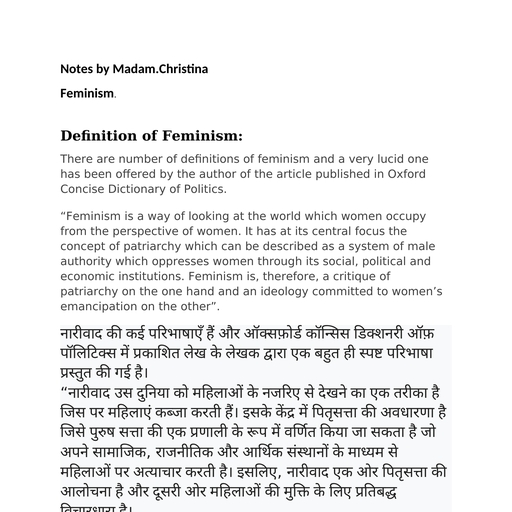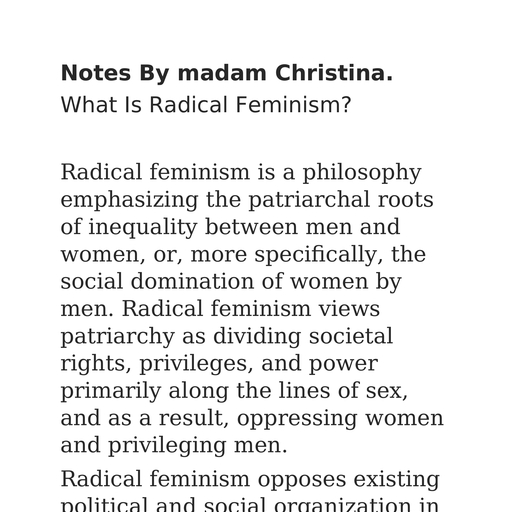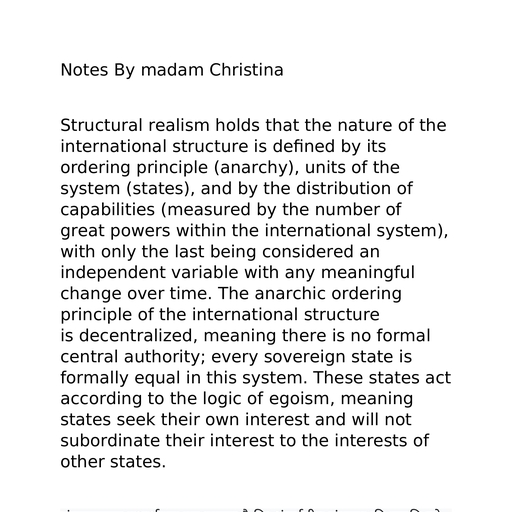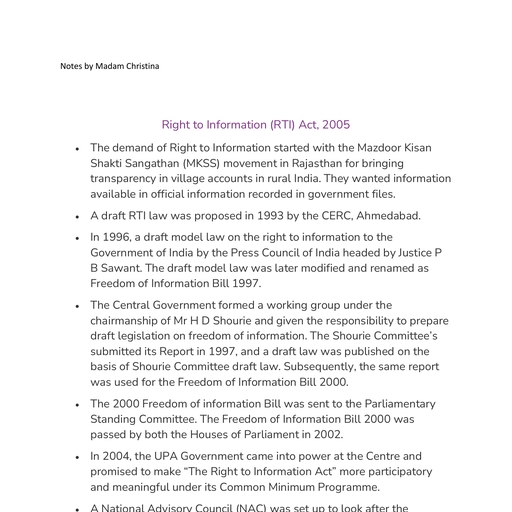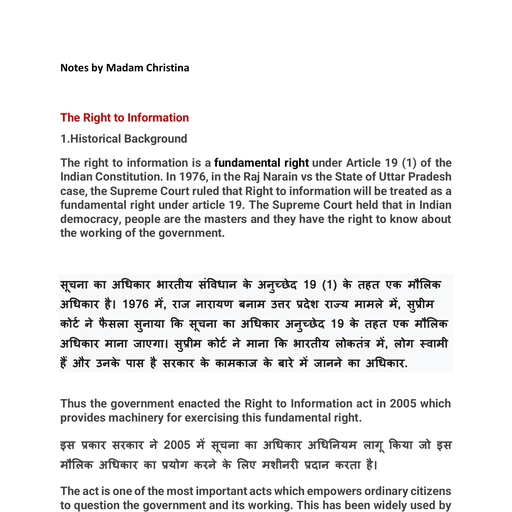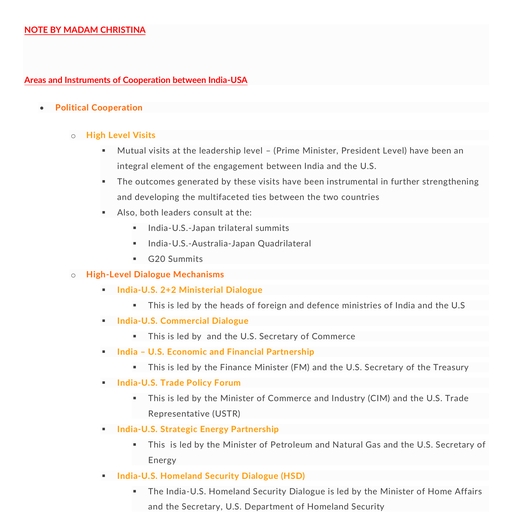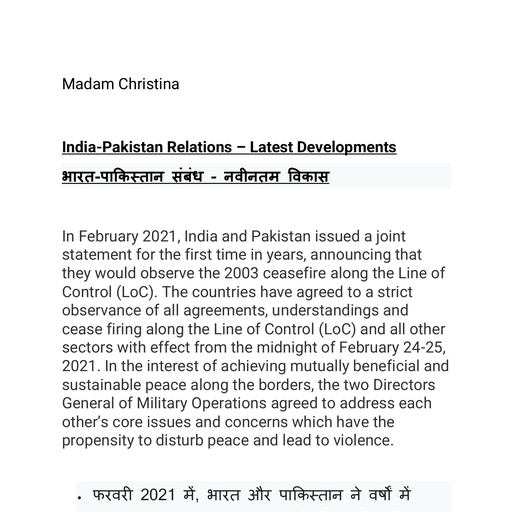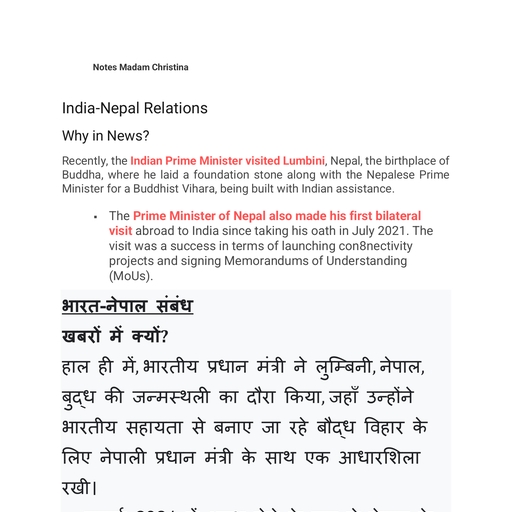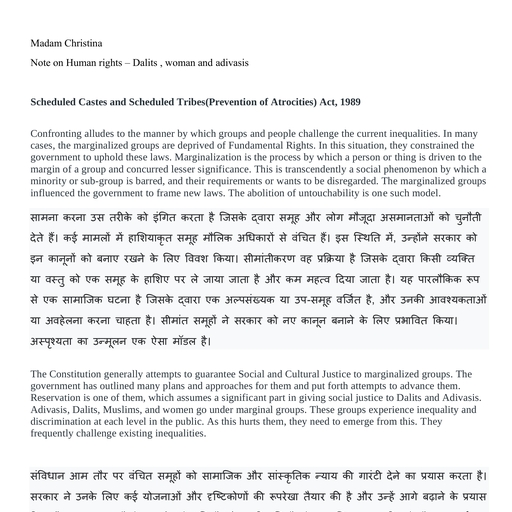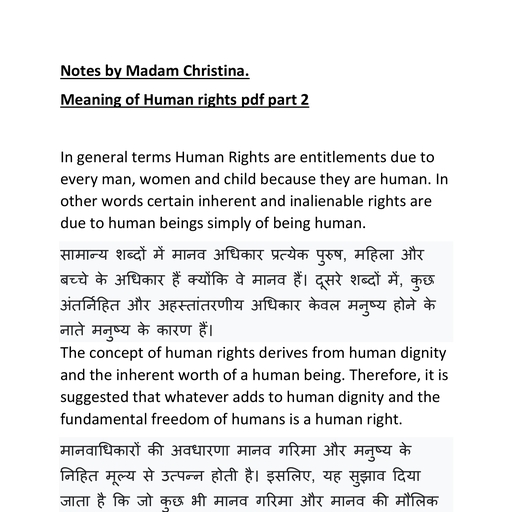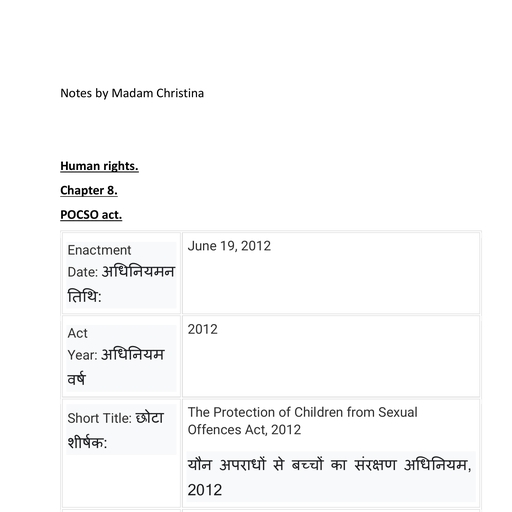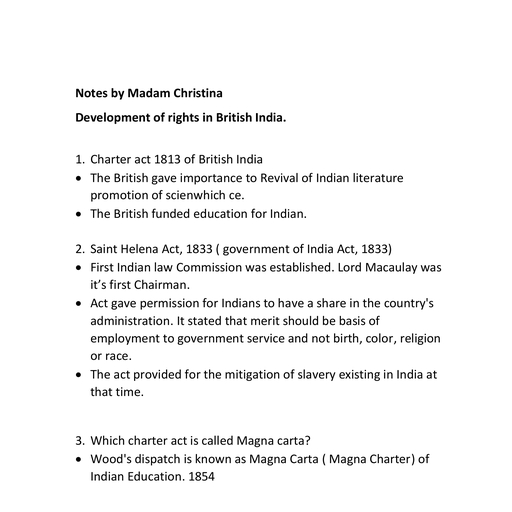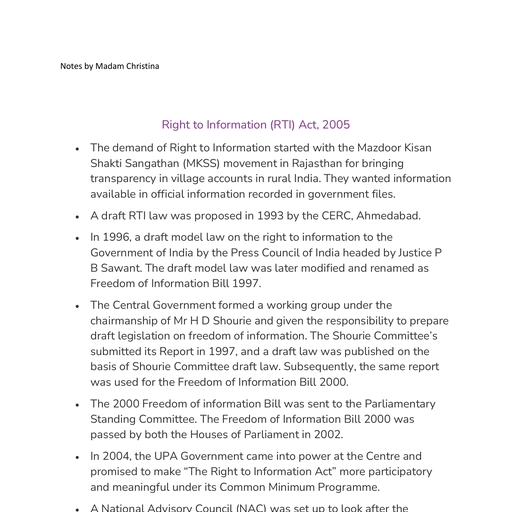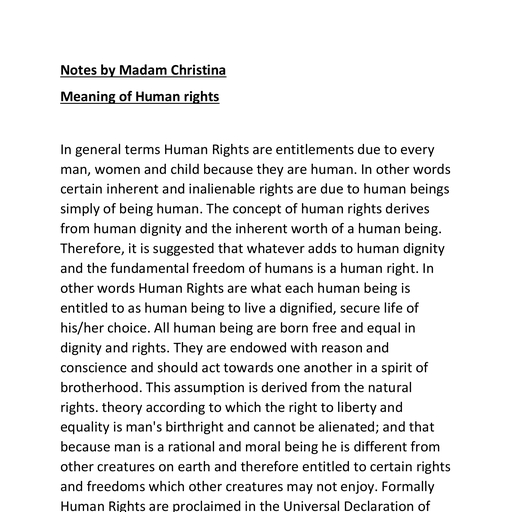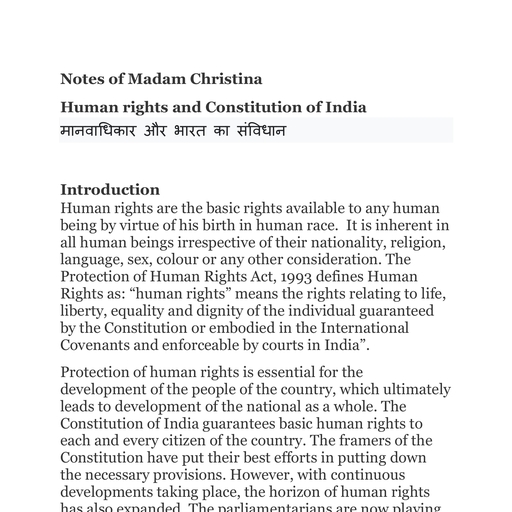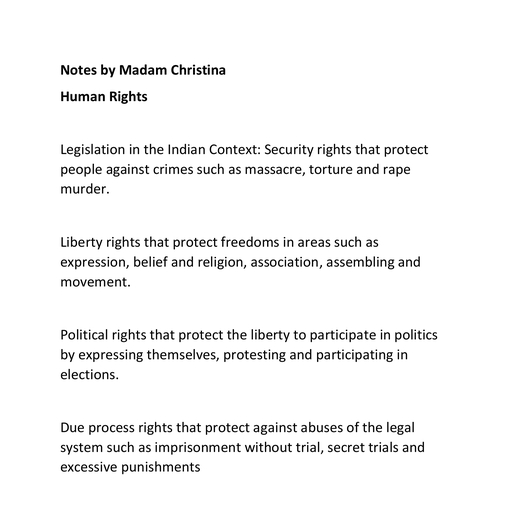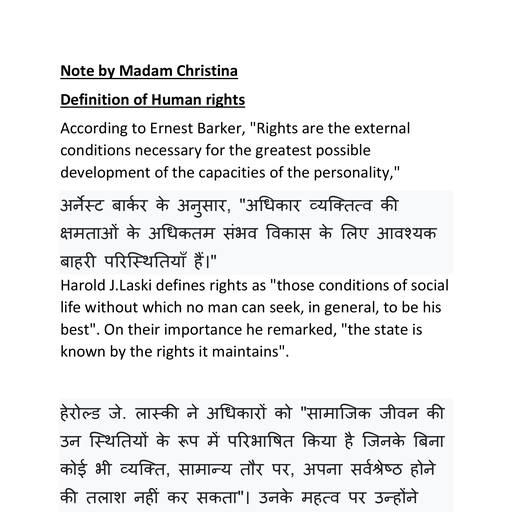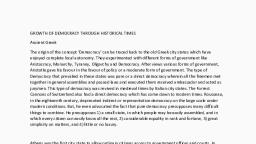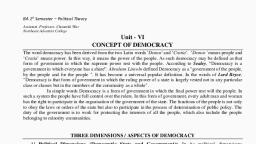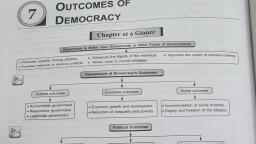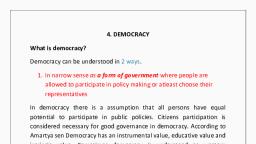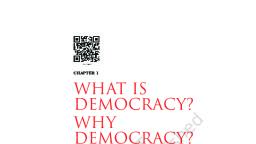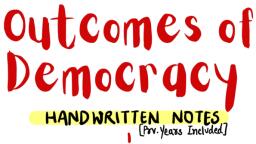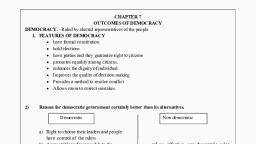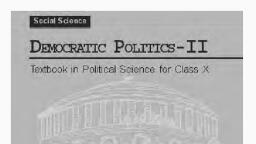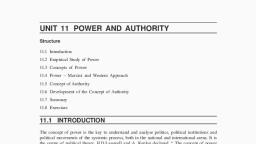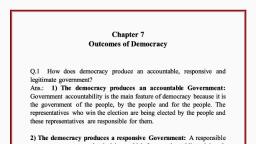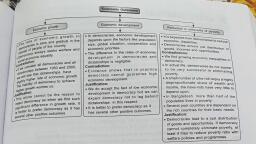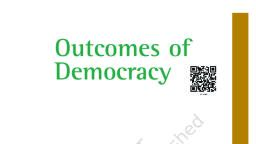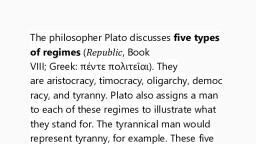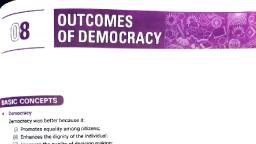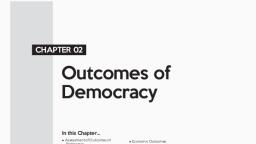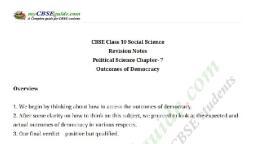Page 1 :
Liberal democracy is a form of government. It is a representative democracy in which, the ability of the elected representatives to exercise decision-making power is subject to, the rule of law, and usually moderated by a constitution that emphasizes the protection, of the rights and freedoms of individuals, and which places constraints on the leaders, and on the extent to which the will of the majority can be exercised against the rights, , of minorities., , The rights and freedoms protected by the constitutions of liberal democracies are, varied, but they usually include most of the following: rights to due, , process, privacy, and equality before the law, and freedoms, , of speech, assembly and religion. In liberal democracies these rights (also known as, “liberal rights") may sometimes be constitutionally guaranteed, or are otherwise created, by statutory law or case law, which may in turn empower various civil institutions to, administer or enforce these rights., , Liberal democracies also tend to be characterized by tolerance and pluralism; widely, differing social and political views, even those viewed as extreme or fringe, are, permitted to co-exist and compete for political power on a democratic basis. Liberal, democracies periodically hold elections where groups with differing political views have, the opportunity to achieve political power. In practice, these elections are nearly always, won by groups who support liberal democracy; thus the system perpetuates itself., , The term "liberal" in “liberal democracy" does not imply that the government of such a, democracy must follow the political ideology of liberalism. It is merely a reference to the, fact that the initial framework for modern liberal democracy was created during the Age, of Enlightenment by philosophers advocating liberty. They emphasized the right of the, individual to have immunity from the arbitrary exercise of authority. At present, there are, numerous different political ideologies that support liberal democracy. Examples, include conservatism, Christian Democracy, social democracy and some forms, , of socialism., , A liberal democracy may take the form of a constitutional republic or a, mon rchy f., , Structure, , , , Liberal democracies today usually have universal suffrage, granting all adult citizens the, right to vote regardless of race, gender or property ownership. However, especially, historically, some countries regarded as liberal democracies have had a more limited
Page 2 :
franchise. There may also be qualifications like a registration procedure to be allowed to, vote. The decisions taken through elections are taken not by all of the citizens, but, rather by those who choose to participate by voting., , The elections should be free and fair. The political process should be competitive., Political pluralism is usually defined as the presence of multiple and distinct political, parties., , The liberal democratic constitution defines the democratic character of the state. The, purpose of a constitution is often seen as a limit on the authority of the government. The, American political tradition emphasise the separation of powers, an independent, judiciary, and a system of checks and balances between branches of government., Many European democracies are more likely to emphasise the importance of the state, being a Rechtsstaat that follows the principle of rule of law. Governmental authority is, legitimately exercised only in accordance with written, publicly disclosed laws adopted, and enforced in accordance with established procedure. Many democracies, , use federalism - (also known as vertical separation of powers) - in order to prevent, abuse and increase public input by dividing governing powers between municipal,, provincial and national governments., , SRights and freedoms, , The most often quoted criteria for liberal democracy take the form of specific rights and, freedoms. They were originally considered essential for the functioning of a liberal, democracy, but they have acquired such prominence in its definition, that many people, now think they are democracy. Since no state wants to admit it is “unfree”, and since its, enemies may be depicted as "tyrannies" by its propagandists, they are also usually, contested., , = Right to life and security of person., , = Freedom from slavery., , = Freedom of movement., , = Equality before the law and due process under the rule of law., , = Freedom of speech., , = Freedom of information., , = Freedom of the press and access to alternative information sources., = Freedom of association and assembly ., , = Freedom of education.
Page 3 :
= Freedom of religion., = An independent judiciary, "The right to own property, and to buy and sell the same, is often seen as a liberal freedom bound, , up with the above, though this is a very hotly contested proposition., , In practice, democracies do have specific limits on specific freedoms. There are various, legal limitations like copyright and laws against defamation. There may be limits on antidemocratic speech, on attempts to undermine human rights, and on the promotion or, justification of terrorism. In the United States more than in Europe, during the Cold War,, such restrictions applied to Con ts. Now they are more commonly applied to, organizations perceived as promoting terrorism or the incitement of group hatred., Examples include anti-terrorism legislation, the shutting down of Hezbollah satellite, broadcasts, and laws against hate speech. Critics claim that these limitations may go, too far and that there may be no due and fair judicial process., , , , The common justification for these limits is that they are necessary to guarantee the, existence of democracy, or the existence of the freedoms themselves. For example,, allowing free speech for those advocating mass murder undermines the right to life and, security. Opinion is divided on how far democracy can extend, to include the enemies of, democracy in the democratic process. If relatively small numbers of people are, excluded from such freedoms for these reasons, a country may still be seen as a liberal, democracy. Some argue that this is not qualitatively different from autocracies that, persecutes opponents, but only quantitatively different, since only a small number of, people are affected and the restrictions are less severe. Others emphasize that, democracies are different. At least in theory, also opponents of democracy are allowed, due process under the rule of law. In principle, democracies allow critic and change of, the leaders and the political and economic system itself; it is only attempts to do so, violently and promotion of such violence that is prohibited., , Preconditions, , Although they are not part of the system of government as such, the presence of, a middle class, and a broad and flourishing civil society are often seen as pre-conditions, for liberal democracy., , For countries without a strong tradition of democratic majority rule, the introduction of, free elections alone has rarely been sufficient to achieve a transition from dictatorship to, democracy; a wider shift in the political culture and gradual formation of the institutions, of democratic government are needed. There are various examples, like in Latin
Page 4 :
America, of countries that were able to sustain democracy only temporarily or in limited, form until wider cultural changes occurred to allow true majority rule., , One of the key aspects of democratic culture is the concept of a" loyal opposition”. This, is an especially difficult cultural shift to achieve in nations where transitions of power, have historically taken place through violence. The term means, in essence, that all, sides in a democracy share a common commitment to its basic values. Political, competitors may disagree, but they must tolerate one another and acknowledge the, legitimate and important roles that each play. The ground rules of the society must, encourage tolerance and civility in public debate. In such a society, the losers accept, the judgment of the voters when the election is over, and allow for the peaceful transfer, of power. The losers are safe in the knowledge that they will neither lose their lives nor, their liberty, and will continue to participate in public life. They are loyal not to the, specific policies of the government, but to the fundamental legitimacy of the state and to, the democratic process itself., , The origins of liberal democracy, , Liberal democracy traces its origins - and its name - to the European 18th century, also, known as the Age of Enlightenment. At the time, the vast majority of European states, were monarchies, with political power held either by the monarch or the aristocracy. The, possibility of democracy had not been seriously considered by political theory, , since classical antiquity, and the widely held belief was that democracies would be, inherently unstable and chaotic in their policies due to the changing whims of the, , people. It was further believed that democracy was contrary to human nature, as human, beings were seen to be inherently evil, violent and in need of a strong leader to restrain, their destructive impulses. Many European monarchs held that their power had, , been ordained by God, and that questioning their right to rule was tantamount, , to blasphemy., , These conventional views were challenged at first by a relatively small group of, Enlightenment intellectuals, who believed that human affairs should be guided, , by reason and principles of liberty and equality. They argued that all people are created, equal, and therefore political authority cannot be justified on the basis of “noble blood",, a supposed privileged connection to God, or any other characteristic that is alleged to, make one person superior to others. They further argued that governments exist to, serve the people, not vice versa, and that laws should apply to those who govern as, well as to the governed (a concept known as rule of law).
Page 5 :
Near the end of the 18th century, these ideas inspired the American Revolution and, , the French Revolution, which gave birth to the ideology of liberalism and instituted forms, of government that attempted to apply the principles of the Enlightenment philosophers, into practice. Neither of these forms of government was precisely what we would call a, liberal democracy we know today (the most significant difference being that voting rights, were still restricted to a minority of the population), and the French attempt turned out to, be short-lived, but they were the prototypes from which liberal democracy later grew., Since the supporters of these forms of government were known as liberals, the, governments themselves came to be known as liberal democracies., , , , When the first prototypical liberal democracies were founded, the liberals themselves, were viewed as an extreme and rather dangerous fringe group that threatened, international peace and stability. The conservative monarchists who opposed liberalism, and democracy saw themselves as defenders of traditional values and the natural order, of things, and their criticism of democracy seemed vindicated when Napoleon, Bonaparte took control of the young French Republic, reorganized it into the first French, Empire and proceeded to conquer most of Europe. Napoleon was eventually defeated, and the Holy Alliance was formed in Europe to prevent any further spread of liberalism, or democracy. However, liberal democratic ideals soon became widespread among the, general population, and, over the 19th century, traditional monarchy was forced on a, continuous defensive and withdrawal. Reforms and revolutions helped move most, European countries towards liberal democracy. Liberalism ceased being a fringe, opinion and joined the political mainstream. At the same time, a number of non-liberal, ideologies developed that took the concept of liberal democracy and made it their own., The political spectrum changed; traditional monarchy became more and more a fringe, view and liberal democracy became more and more mainstream. By the end of the 19th, century, liberal democracy was no longer only a "liberal" idea, but an idea supported by, many different ideologies. After World War | and especially after World War Il, liberal, democracy achieved a dominant position among theories of government and is now, endorsed by the vast majority of the political spectrum., , Several organisations and political scientists maintain lists of free and unfree states,, both in the present and going back a couple centuries. Of these, the best known may be, the Polity Data Set and that produced by Freedom House., , There is general agreement that the states of the European Union, Japan, the United, States, Canada, India, South Africa, Australia, and New Zealand are liberal, , democracies.


